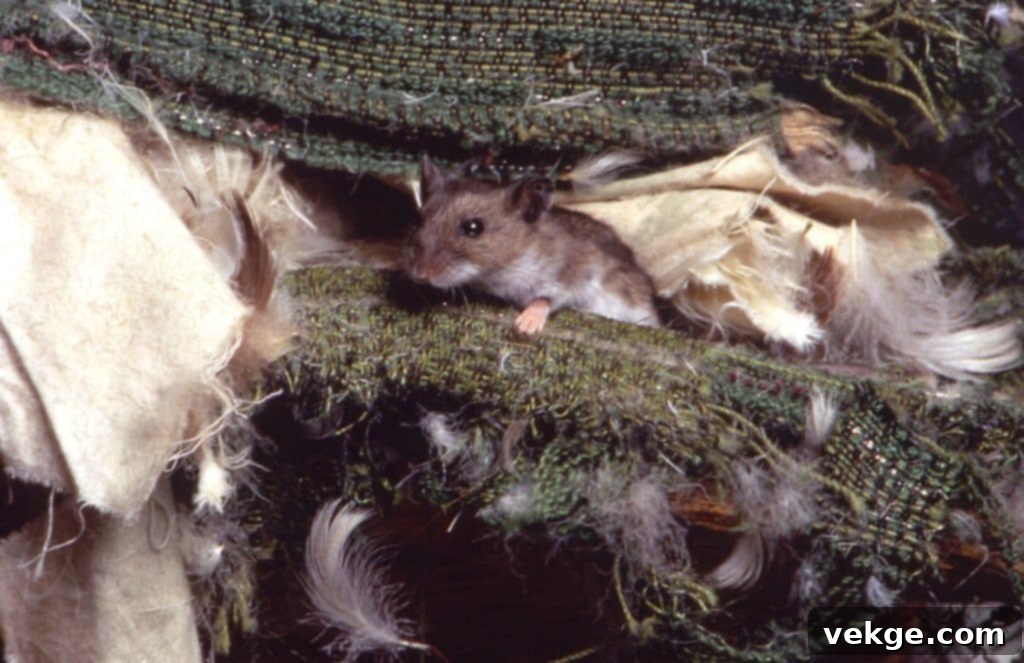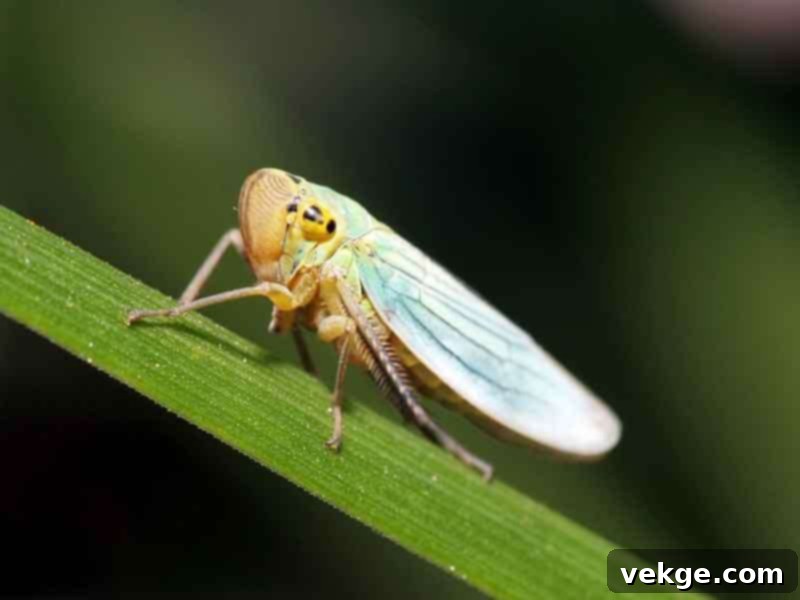Understanding How Weather Influences Pest Activity: A Comprehensive Guide to Seasonal Pest Control
Our planet is a dynamic system, constantly undergoing shifts in weather patterns and seasonal changes. While humans readily adapt by altering their clothing or weekend plans, these environmental fluctuations have a profound and often overlooked impact on another significant group of residents: pests. From the smallest foraging ants to the most persistent cockroaches, the weather plays a crucial role in dictating their activity levels, breeding success, survival rates, and even their inclination to invade our homes. A deep understanding of this intricate connection empowers us to anticipate potential pest problems and implement proactive strategies to maintain pest-free living spaces throughout the year.
Temperature: The Primary Driver of Pest Behavior
Perhaps the single most critical weather factor influencing pest populations is temperature. For a vast majority of pests, including cold-blooded insects and even warm-blooded rodents, ambient temperatures directly govern their metabolic rates, activity levels, reproductive cycles, and ultimately, their very survival. When extreme temperatures hit, whether it’s scorching heat or biting cold, it can lead to either a population boom or a significant bust for various pest species.
How Heat Affects Pest Populations
Warm summers, particularly those accompanied by high humidity, can act as a catalyst for a population explosion among many pests. Elevated temperatures accelerate their metabolism, leading to a heightened need for food and water resources. This increased demand directly fuels more rapid reproduction and shorter generation times. Mosquitoes, for example, are notorious for thriving in warm, humid conditions. Their eggs develop at an accelerated pace, and adult mosquitoes become more active and numerous, resulting in a noticeable surge in itchy bites and a higher risk of disease transmission. Similarly, warmer temperatures can significantly extend the breeding season for countless insect species, enabling them to produce multiple generations within a single year, amplifying their numbers exponentially.
However, the impact of heat is not universally beneficial for all pests. While some species flourish, others struggle immensely under intense conditions. Extreme heat waves, especially those combined with drought, can disrupt delicate life cycles, desiccate eggs, or even kill pests outright. This is particularly true for species with limited heat tolerance or those that rely heavily on consistent moisture, such as certain types of spiders, slugs, or some larval stages of insects that cannot find adequate shelter.
The Impact of Cold and Mild Winters
Conversely, cold temperatures also exert a powerful influence. Many pests enter a state of dormancy, diapause (a type of suspended animation), or hibernation to survive the winter months. During this period, their activity ceases, and their metabolism slows dramatically. However, mild winters can significantly alter this natural cycle. Warmer-than-average winters often mean higher survival rates for overwintering pests, as fewer succumb to the cold. It can also lead to earlier emergence in the spring and an extended breeding season, giving them a head start and potentially increasing their populations earlier in the year. This shift can disrupt natural predator-prey balances and lead to an earlier onset of pest issues for homeowners.
Rainfall: A Double-Edged Sword for Pests

While temperature often takes center stage, rainfall also significantly impacts pest behavior and populations. Its effects can be both beneficial and detrimental to different species, often leading to a complex dynamic.
Heavy Rains and Their Consequences
Heavy and prolonged rainfall can have immediate and dramatic consequences. It can flood underground burrows, nests, and other natural habitats, forcing pests like rodents, ants, and even some types of cockroaches to abandon their saturated homes in search of higher, drier ground. This often translates into an unwelcome influx of these creatures into our homes and buildings, seeking refuge in attics, basements, wall voids, and other sheltered spaces. Furthermore, the standing water that inevitably collects after heavy rain creates ideal breeding grounds for mosquitoes and other water-dependent pests, such as certain biting midges. These temporary pools become nurseries where eggs rapidly develop into larvae and then adult pests, contributing to local population surges.
Drought Conditions and Pest Invasions
On the flip side, periods of severe drought can also drive pests indoors. When natural water sources become scarce, pests like spiders, rodents, and even some insects will seek moisture within human dwellings. They may enter through small cracks and crevices in search of leaky pipes, condensation, or even pet water bowls, making them a nuisance even in seemingly dry conditions.
Beneficial Aspects of Rain for Pest Control
However, it’s not all doom and gloom from a pest control perspective. For some pests, rain can act as a natural deterrent or control mechanism. For instance, excessive moisture can disrupt the delicate balance of a termite colony, particularly subterranean species, making their tunneling and foraging more difficult and potentially leading to decreased activity. Additionally, heavy rain showers can physically wash away some insect populations and their eggs, especially those on plant foliage or in exposed areas, thereby reducing their numbers in the long run. The sudden deluge can also flush out pheromone trails used by ants and other insects, temporarily disorienting them and disrupting their foraging patterns.
Beyond Temperature and Rain: Other Influential Weather Factors
Temperature and rainfall are undeniably critical, but they are just two pieces of the complex weather puzzle influencing pest activity. Several other environmental factors also play significant roles in determining where pests go and what they do:
- Wind: Strong winds can be a mixed blessing for pests. On one hand, persistent high winds can disrupt the flight of many insects, making it difficult for them to navigate, find mates, or locate food sources. It can physically blow smaller insects away from their intended paths. On the other hand, wind can also serve as a dispersal mechanism for some insect populations, carrying them over long distances and potentially reducing their local concentration in one area while introducing them to another. Spiders, for example, use wind to “balloon” to new locations.
- Humidity: High humidity levels are a dream come true for many pests, creating ideal breeding and survival conditions. Cockroaches, silverfish, and millipedes, for instance, thrive in moist, humid environments as it helps prevent desiccation (drying out) and supports the development of their eggs. Conversely, unusually dry conditions can force pests like spiders, sowbugs, and even some types of ants to seek moisture indoors, often leading them into homes that might otherwise be unappealing.
- Barometric Pressure: Sudden and significant changes in barometric pressure, often associated with approaching storms or major weather fronts, can trigger increased activity in some pests. Pests like cockroaches, rodents, and even some types of fish can detect these subtle changes in atmospheric pressure. This detection often prompts them to become more active in search of shelter or food, as it signals an impending change in their environment, compelling them to prepare for harsher conditions.
Common Pests and Their Weather-Triggered Activity

By understanding how specific weather conditions influence different pest species, homeowners can better anticipate potential problems and implement targeted preventive measures. Here’s a detailed guide to some common pests and the weather conditions that typically trigger their increased activity or indoor invasions:
- Mosquitoes: These notorious biters thrive in warm, humid weather, especially following periods of rain that create ample standing water for their larvae to develop. Expect peak activity from late spring through early fall in most regions.
- Rodents (Mice & Rats): Rodents frequently seek shelter indoors during cold snaps, heavy rain, or even periods of extreme heat and drought. They are looking for stable temperatures, protection from elements, and reliable food and water sources, making your home an attractive refuge.
- Termites: Subterranean termite activity, particularly swarming, often increases during warm, humid weather, especially after spring or summer rains. These conditions encourage them to leave their colonies to mate and establish new ones, often near moist wood in or around your home.
- Ants: Ants become significantly more active during warm weather as they forage for food to support their expanding colonies. They will also seek shelter indoors during heavy rain to escape flooding or during extreme heat to find cooler, moister conditions.
- Cockroaches: These resilient pests prefer warm, humid environments, making summer months their peak activity period. They are often driven indoors by both excessive outdoor moisture (rain) and excessive dryness (drought) in search of ideal conditions and water.
- Spiders: While many spiders are content outdoors, extreme weather conditions—be it very cold, very hot, or very dry—can drive them into homes looking for more moderate temperatures, moisture, and a steady supply of prey.
Weatherproofing Your Home: Proactive Pest Prevention Strategies
Now that you have a comprehensive understanding of the intricate connection between weather and pest behavior, you can take significant proactive steps to protect your home. Implementing these pest control tips can create a strong barrier against unwanted invaders, regardless of the season or the forecast:
- Seal Cracks and Gaps: Thoroughly inspect the exterior of your home and seal any cracks, crevices, or gaps around doors, windows, utility lines, and the foundation. Even a tiny opening can be an entry point for small insects and rodents. Use caulk, weatherstripping, or steel wool as appropriate.
- Repair Leaky Pipes and Faucets: Eliminate crucial moisture sources by promptly repairing any leaky pipes, faucets, or drains inside and outside your home. Standing water or damp areas are irresistible to pests like cockroaches, termites, and mosquitoes.
- Proper Food Storage and Waste Management: Store all food in airtight containers and regularly dispose of garbage in sealed bins. Pests are constantly seeking food, and easily accessible crumbs or waste can be a major attractant.
- Manage Vegetation Around Your Foundation: Trim back overgrown vegetation, shrubs, and tree branches that are close to your home’s foundation or roofline. Dense foliage provides excellent harborage for pests and can act as a “bridge” directly into your home. Ensure at least a foot of clear space between plants and your home.
- Install and Maintain Screens: Ensure all windows and doors have well-fitting screens that are free of tears or holes. This is especially crucial during warmer months when insects are most active and windows are often open.
- Improve Drainage: Address any areas around your home where water collects, such as clogged gutters or poor landscape grading. Proper drainage prevents standing water, which is a prime breeding ground for mosquitoes and can lead to moisture-loving pests.
- Utilize Dehumidifiers: In basements, crawl spaces, or other areas prone to high humidity, consider using a dehumidifier to reduce moisture levels. This makes these spaces less appealing to pests like cockroaches, silverfish, and millipedes.
- Regular Inspections: Periodically inspect your home, especially during seasonal transitions, for signs of pest activity or potential entry points. Early detection is key to effective pest management.
By staying informed about upcoming weather patterns and taking these proactive measures, you can significantly minimize the impact of pests on your home and garden. Remember, a little preparation and vigilance go a long way in keeping your living space comfortable and pest-free, no matter what the ever-changing weather throws your way. Investing in these preventive steps will not only protect your home but also contribute to your peace of mind.